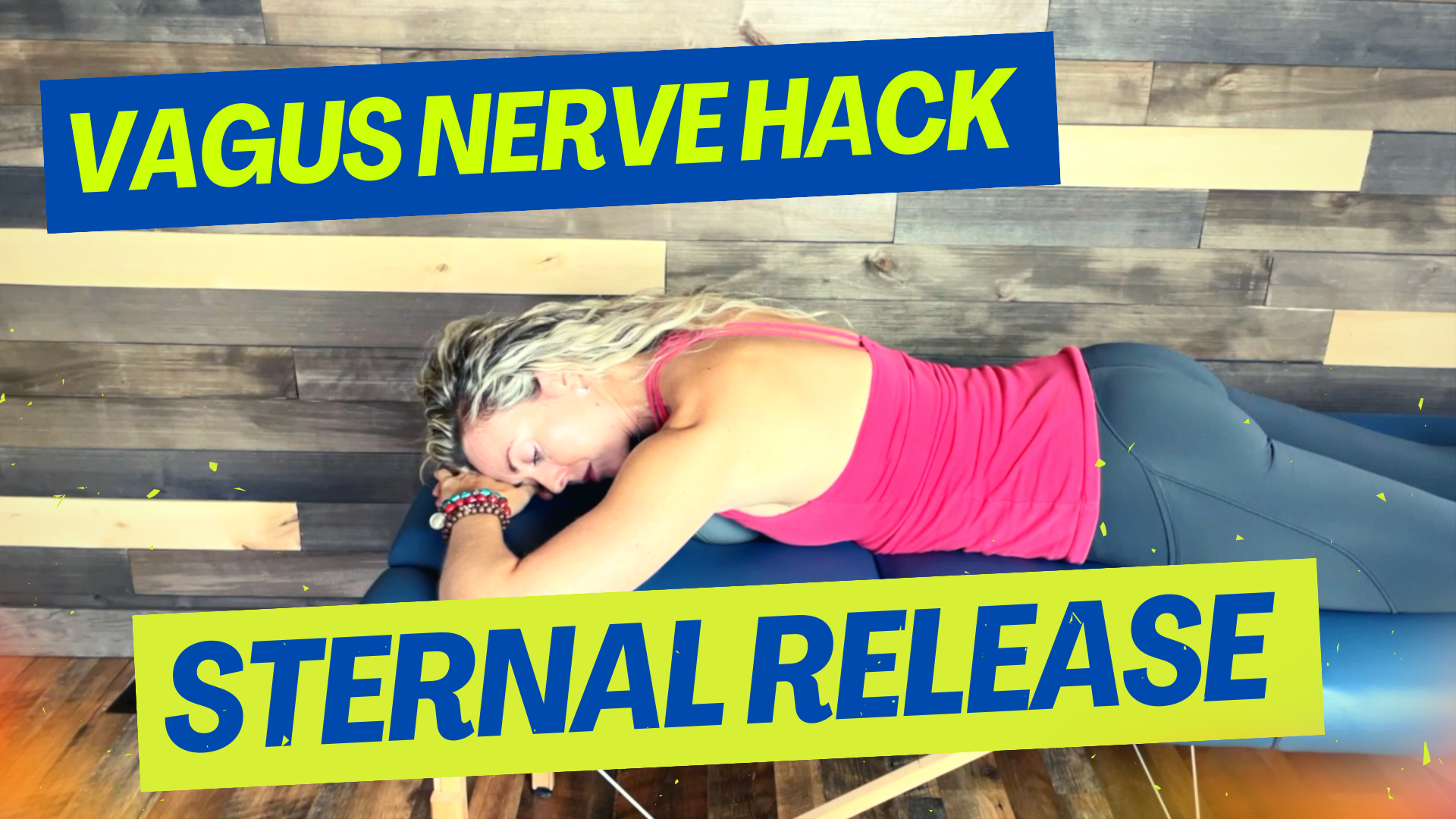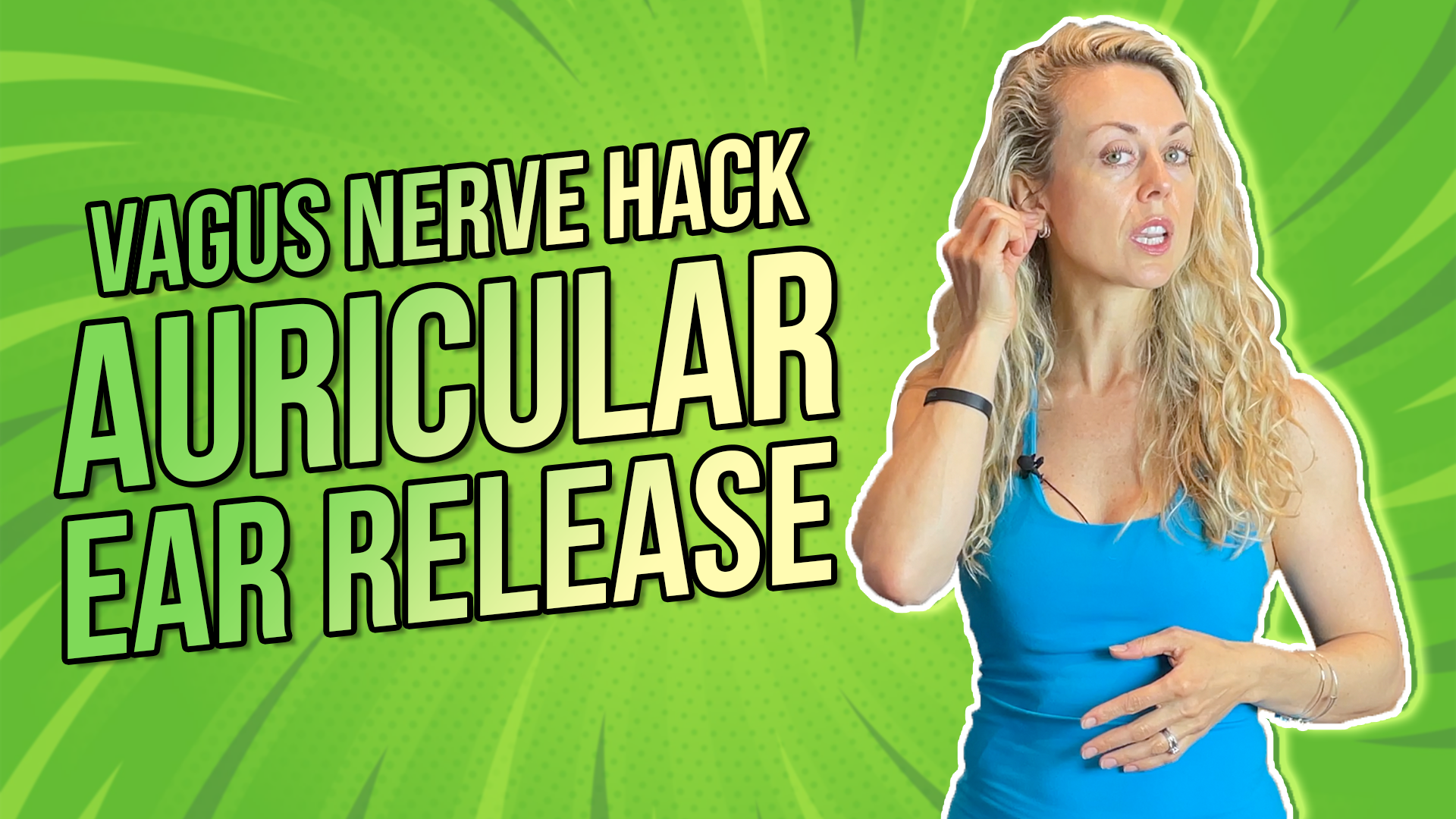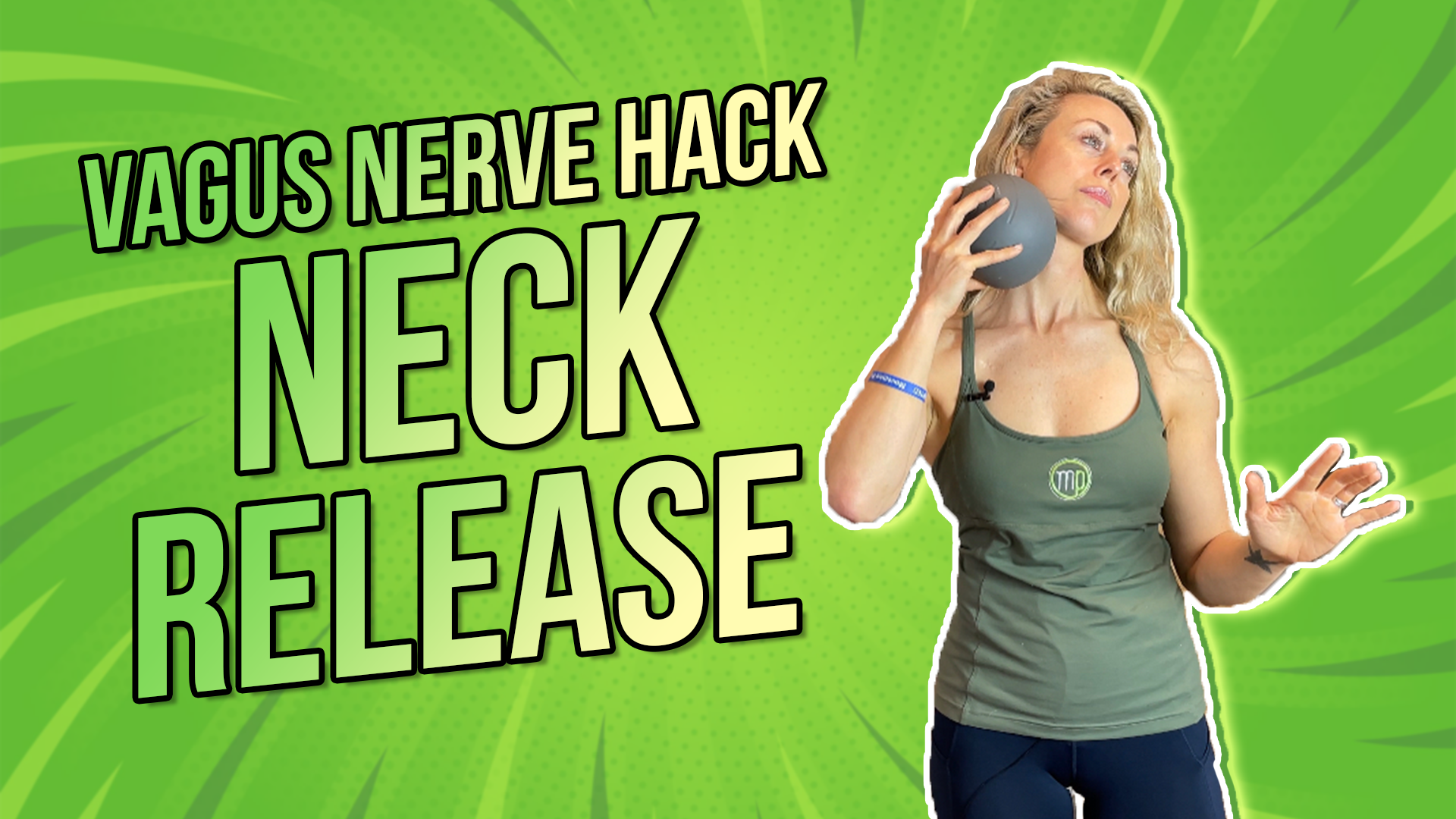Are you experiencing any kind of blood pressure dysregulation, heart palpitations, bradycardia, slow heartbeat tachycardia, or faster heart rate that may be associated with your autonomic nervous system?
Rather watch or listen?
Sternal Release Exercise Precaution
Before we jump into the anatomy, I want to make sure that if you have any concerns about this particular exercise, please check with your doctor or health practitioner to see if it is appropriate for you.
Vagus Nerve Anatomy
With that said, let’s start with the anatomy of the vagus nerve, recognizing that this aspect of the vagus nerve is how we are going to influence it via the vagus nerve exercise.
The vagus nerve exits the brainstem and we have branches into the ear, throat, and then the area that we’re focusing on today is the influence of how the vagus nerve innervates the SA node of the heart. It passes through the lung tissue, and the diaphragm although not innervating it, and then it moves into the entire GI tract. We can influence the vagus nerve it through the SA node of the heart, as well as a pressure change. We can target the baroreceptors that are lying within the carotid artery and the aorta. Because of this pressure change, we can influence the vagus nerve response and create the relaxation response.
How to Do Sternal Release + Reminders
Before performing any vagus nerve exercise, you always want to make sure that you are in a safe environment. Again, you should consult with a healthcare provider if this is necessary and appropriate for you. For example, if you’re experiencing extreme blood pressure dysregulation, this may not be suitable for you at this time. However, you do want to ensure that you’re safe, you feel confident in the exercise, and you approach it with gentle curiosity rather than aggression. If you’re starting this particular exercise for the first time, ensure that you begin with just a little bit and gradually increase your duration over time.
To perform this exercise, grab a medium-sized soft ball and lie over the ball, with the ball directly underneath your sternum. Allow yourself to settle in, taking some nice slow diaphragmatic breaths. Then, when you’re ready, take a breath in through your nose, pretend to cough, but don’t actually cough. Do this as if you’re holding your breath. Then exhale slowly, and repeat this exercise for anywhere from 10 to 20 minutes. However, we recommend starting with a very small volume of it might be very beneficial for you.
If this was helpful, please give it a like, give it a share, and, of course, subscribe to our YouTube channel, the Movement Paradigm, for weekly tips on mindset, nutrition, and movement. Our goal is to help you live your best life, heal, transform, and, more importantly, thrive.
If you need help more individually, please reach out for a discovery session. We would love the opportunity to help you in any of these areas. And in addition to that, you can feel free to join our app, the Movement Paradigm. We have monthly challenges, live Q&As, and an amazing community, all geared toward whole-body health. So hope to see you there!



